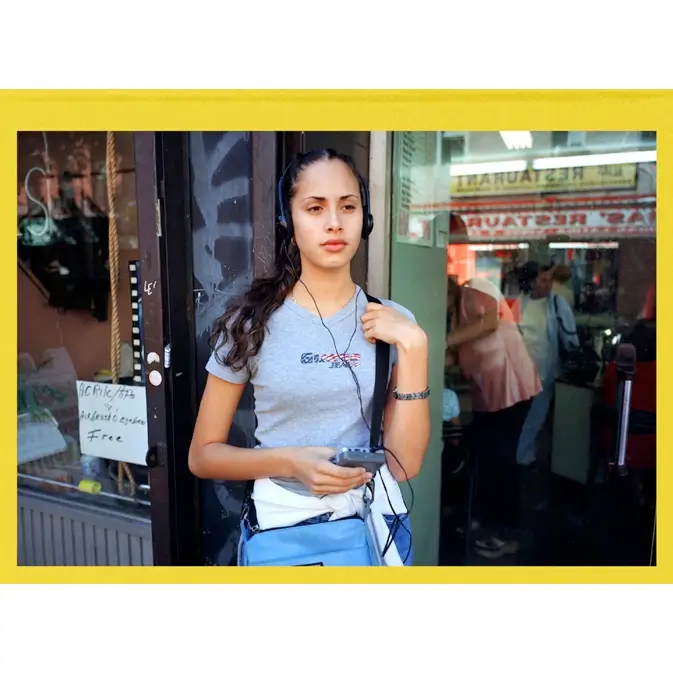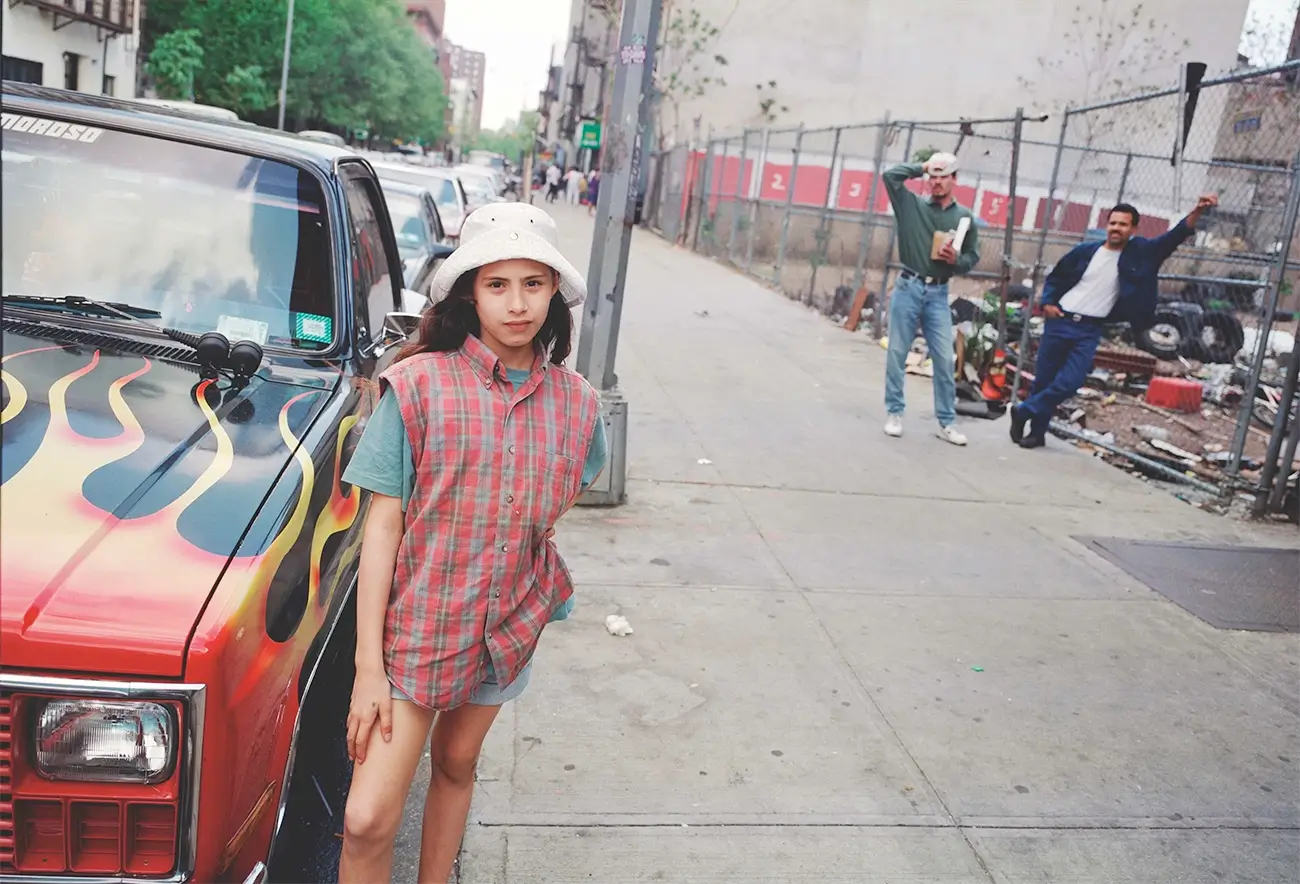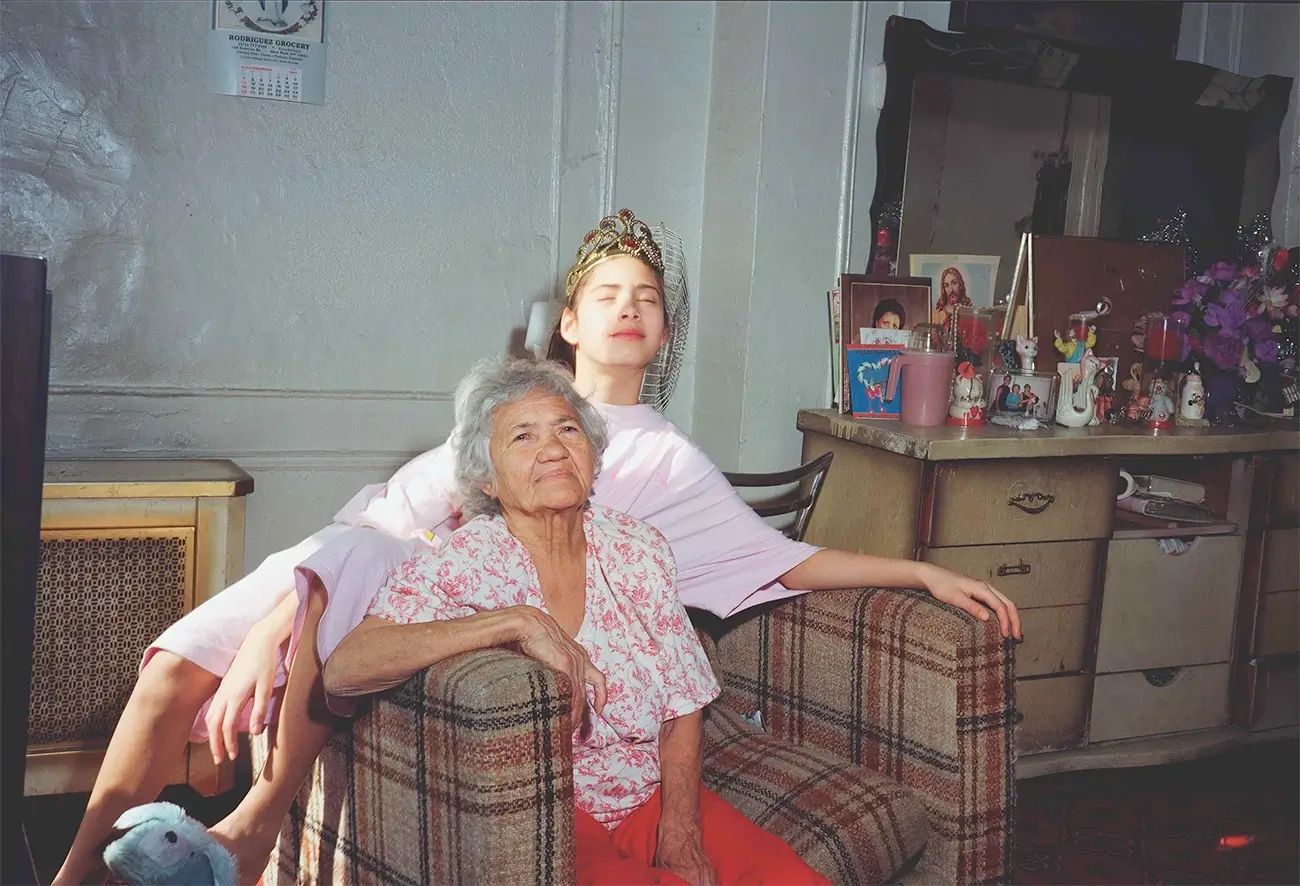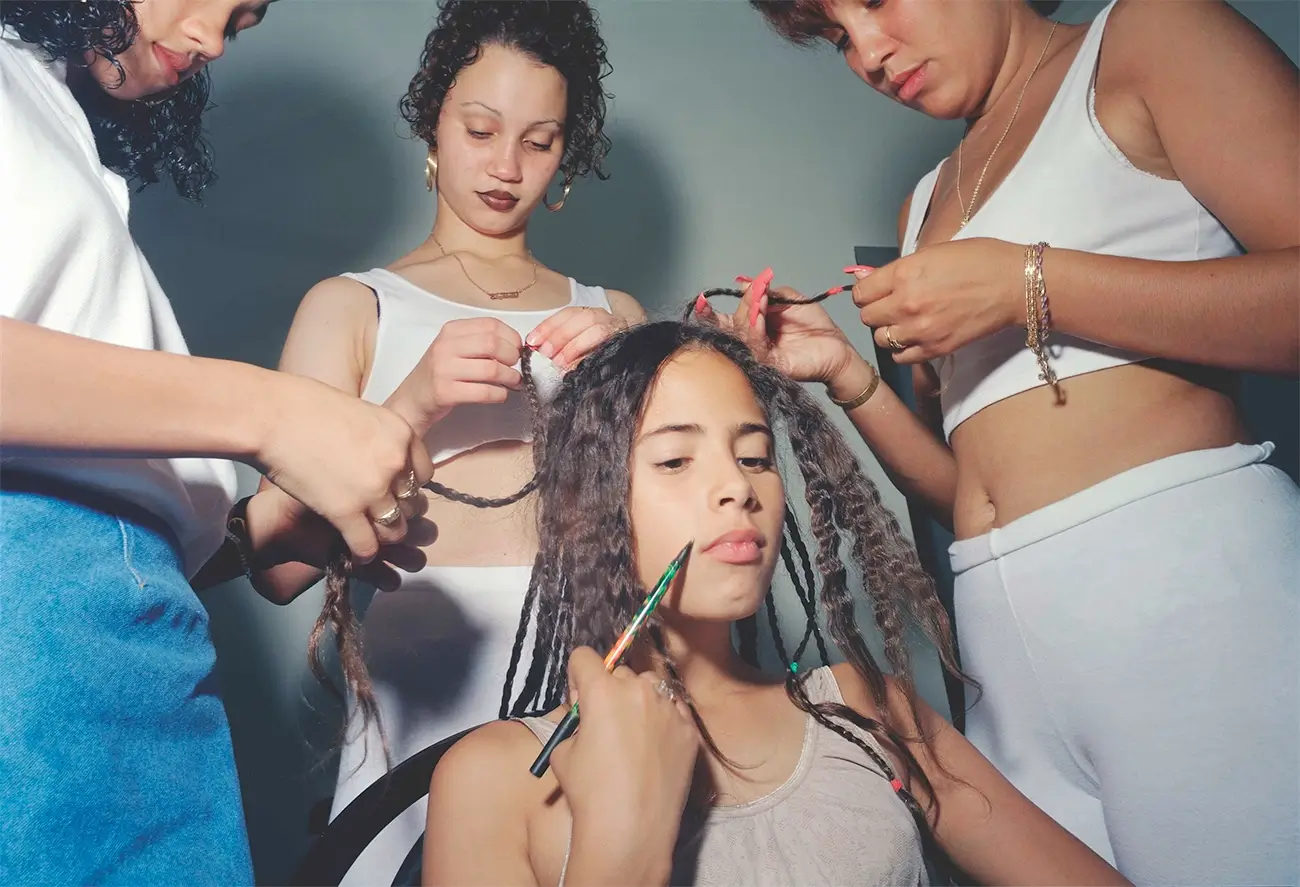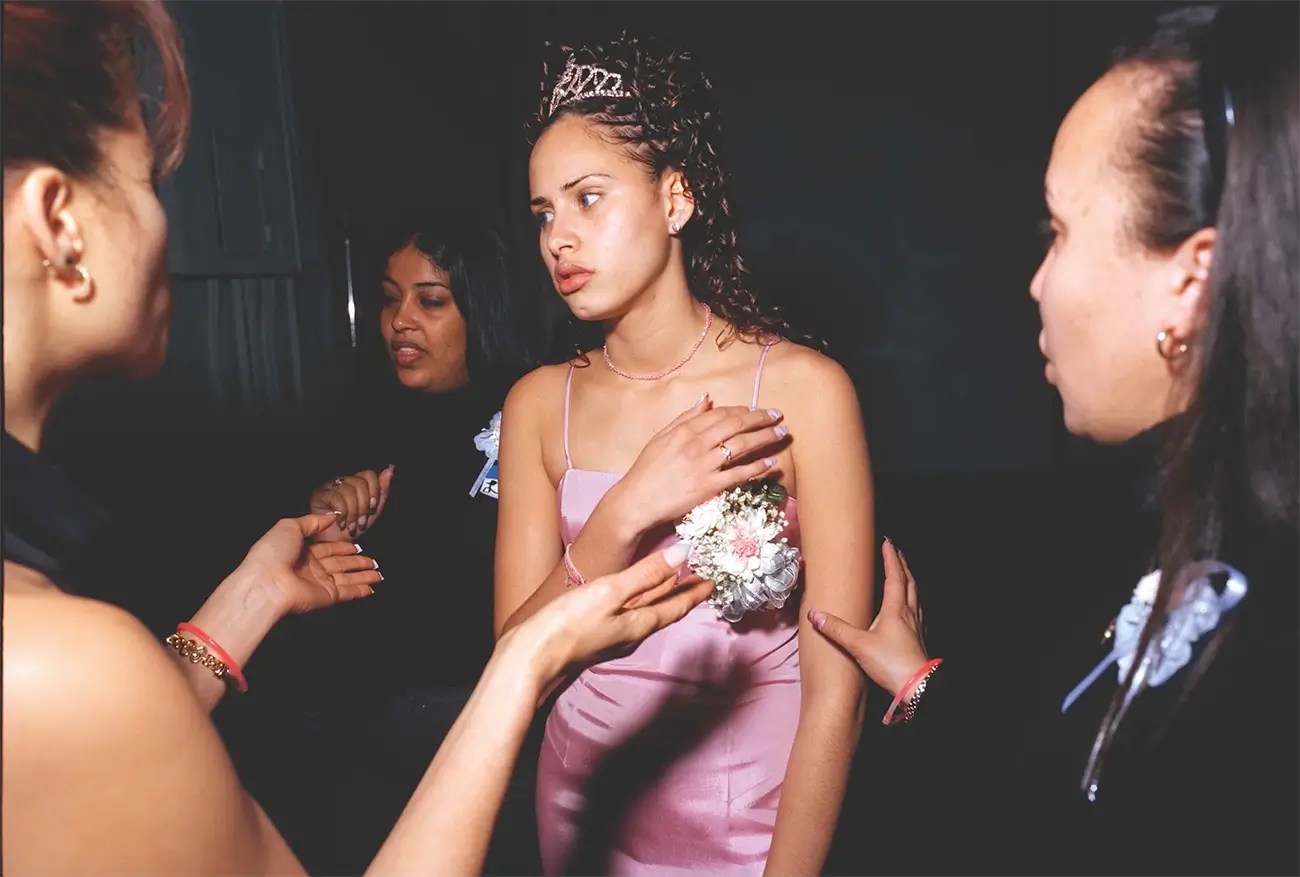''I came up at a time when images of Latinos were few and far between. I rarely saw someone who
looked like me, my parents or my cousins anywhere. If I did see us represented, it was usually in a
film where the Puerto Ricans were sporting a 70’s afro, and doing something likely on the wrong
side of the law. Their lives didn’t seem to really matter. I think that may have something to do with
why I became an actress. I wanted to see myself and my family as we were. A Puerto Rican, lower
middle-class family of 8, with parents who did the best they could to raise us. Despite a lack of
economic security and other hardships we endured, we thrived. We made our sometimes fraught
experiences bearable, and, at times, even magical.
When Angela asked me if she could take pictures of me and my family, we’d already been friends
for a while. I always felt that she had a very deep understanding of my family dynamic, which was
not unlike her Italian one. In the pictures she took, she captured something more than beautiful
work — she captured a pure, honest, and unvarnished truth. Perhaps the reason the photographs
contained in this book resonate so deeply with me is because I’ve never seen the experience of a
Puerto Rican family documented in this way. We get unfiltered access into the life of a Puerto
Rican family vis-a-vis a girl named Glendalis.
Looking through these photographs, I experience a visceral feeling of familiarity that truly moves
me. In this examination of a family life, Angela has captured a feeling of intimacy and closeness in
the relationships with Glendalis’ father, grandmother, cousins, and girlfriends that is rich and
compelling. I feel like I could walk into any one of these rooms and watch their daily life unfold.
The thing that strikes me the most about these photos, though, is Glendalis’ spirit — how they
allow us to experience her growing from a fierce little girl into a warrior of a young woman. We see
her go through rites of passage and can even feel her restlessness as she gets older. Angela has
poignantly captured this, never romanticizing the difficulty of life in the pre-gentrified LES.
Resilience shines through these pictures, which one can almost hear and feel, and which, despite
the striking individuality of their subjects, reveal that there is something universal to all human
experience.''
Luna Lauren Vélez, NYC
Shot exclusively in the pre-gentrified blocks, fields, and buildings of the Lower East Side, the
family photographed in this book occupied a multigenerational tenement house on Stanton Street.
Their story is told through a protagonist named Glendalis. I was raised within a family system
similar to hers, surrounded and embraced by an ever present cast of relatives and friends. Like
me, she was the youngest, and, much as I did, whispered out in the voice of a last-born — the
messenger of a family.
This work is informed by my own beginnings. I perceive it as a search for my own girlhood
alongside larger themes of family and community; the relationships a person nurtures and how
they transform along with us through time.
I was an independent child. My nuclear family’s age gaps allowed me to raise myself; a feral, Gen
X kid. I was engulfed by my enormous family, and yet, most of the time, nobody even knew I was
there. It is important to mention that in spite of the notion that I created a beatific family narrative,
like mine, the reality was far from serene. Clues of this are hidden in the pictures. Crime,
incarceration, gangs, and death are parts of the culture of certain neighbourhoods, and no family
there is immune to their trauma.
This was something I learned a thing or two about growing up in New Haven, one of the most
racially and economically segregated cities in America.
For a photographer, embedding into a project is an unpredictable, organic process. To that point,
my mother says “a reason, a season, or a lifetime” for every relationship. A photographer moves
on, and so do her subjects. This life of a documentary-style photographer is a solitary endeavour.
We are perpetually in search of something, though, admittedly, we rarely know what we seek until
it is found. Every artist leaves a piece of themselves behind when they explore a project. In turn,
the work leaves fingerprints of itself upon the artist. It is cumulative, and none of it can be stripped
away. Committing to a project is like learning not only to speak, but to write, count, and dream in
a previously unknown language.
In the Lower East Side streets and apartments, through long-term documentation, I’d imagine my
own family. I wanted to provide gentle evidence of compelling lives lived, starting here, with
Glendalis and her family. Thus, this deepening practice over the years has created for me a slow,
steady realization that a youngest daughter possesses an eloquent voice.
Angela Cappetta
www.angelacappetta.com
Discovering the 6x9 format was a fulcrum moment for me. I couldn’t have made these refulgent
negatives of crowded apartments without it. Inspired by primitive magnesium flash, my strobe
offers hard light, deep blacks and continuous tone. It is my ideal light.
This book could not have happened without generous support from
Patrick Adams,
Agnes Gund,
Lola Kirke,
Liron Kormas,
Taleah Mona Lusky.
Fellowships with the The New York Foundation for the Arts and The MacDowell Colony have
afforded me time and space to work. The New Yorker and Ana Karina Zatarain deserve special
thanks.
